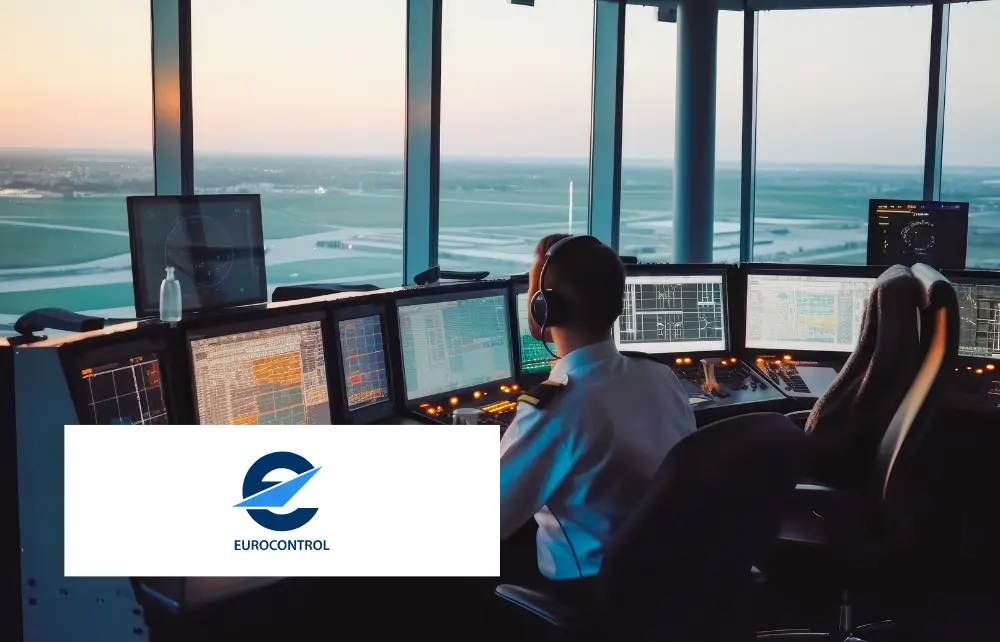Eurocontrol and the SESAR Project - Architecture of Complex Systems
Challenges
- Determine and map system requirements
- Ensure consistency between the various systems and subsystems
- Make sure the various components of the system work together without interfering
- Use a central repository of system architecture models
Results
- The entire repository of system architecture models is available
- Quicker resolution of problems thanks to a collaborative working environment
- Intranet site to access the architecture repository
The Single European Sky ATM Research Project (SESAR) is the technology pillar of the EU's Single European Sky initiative to standardize air traffic management (ATM) across the region. SESAR aims to develop advanced technology to boost operational efficiency, lower costs, and reduce the environmental impact per flight.
The Project has three phases: a definition phase to develop an ATM master plan, a development phase to produce the new generation of ATM procedures and technological systems & components specified in the program, and a deployment phase to manufacture and implement the new ATM systems.
The development phase is being carried out by SESAR Joint Undertaking, a pan-European public-private partnership financed in equal measure by the EU, EUROCONTROL, and other airline-industry members.
What are the ATM system needs for the Single European Sky?
A EUROCONTROL study puts the estimated number of flights in Europe at 16.9 million/ year in 2030 – up from 10 million/ year today. So SESAR faces a significant task in developing safe, reliable ATM systems that can scale up to meet the additional capacity. SESAR researchers are working on some 300 different projects to tackle critical challenges, such as developing integrated management systems for the different phases of a flight to cut waiting times on the runway and in the air and using satellite navigation systems to improve take-off and landing procedures.
The first step in developing a pan-European ATM system was determining the system requirements and mapping it out in detail. The system description needed to include all subsystems and recommended architecture so that engineers can ensure all components work together coherently. Once the system's various components are implemented, they must operate together smoothly without interfering.
How is MEGA HOPEX helping to develop such a complex system?
SESAR researchers use MEGA HOPEX software for the model-based system engineering (MBSE) method to map out the desired ATM system. We installed MEGA's architecture repository solution to make accessing, sharing, and maintaining system architecture descriptions easier.
We are also leveraging MEGA consultants' expertise in system modeling to:
- Outline the architecture framework using a system- and capacity-based approach
- Manage administration of the repository
- Implement MEGA's collaborative software solution
What benefits has MEGA's solution delivered?
MEGA's methods and enterprise architecture applications allow us to ensure coherency among the various system architectures and to manage our reviews of SESAR developments better.
MEGA's solution employs the NATO Architecture Framework (NAF) – the modeling method we use for the Project. The researchers on our team, who are not system architecture experts, had difficulty grasping NAF because of its inherent complexity. But since MEGA's applications let us use an object-oriented approach, we could efficiently train them and now share information across the board.
We also appreciate MEGA's solution's flexibility and collaborative working environment. For instance, we can set different repository access settings for different kinds of users – essential for this Project since only 10% of the team are system architects. The other 90% of users can view the repository and make comments but can't change the data.
The fact that we are working with researchers from so many fields also prompted us to develop a particular intranet site to access the architecture repository. It provides a simplified view of the repository, making it easier for researchers to communicate and share information about a given architecture. That has allowed non-system architects to learn more about IT architecture and become increasingly involved in modeling.
And finally, the collaborative working environment lets us detect problems quickly – sometimes even before they occur. That substantially reduces the time we spend on system maintenance and repair, saving us money.
What are the next steps under SESAR?
We plan to get around 100 contributors to the repository up-to-speed on the working environment. They can use the workflows in MEGA's solution to review their contributed information quickly.
We also plan to use MEGA's repository and associated applications more to help us select suitable deployment options by performing in-depth impact analyses and scenario evaluations.
Next Steps
- Train 100 contributors to use the new repository
- Conduct in-depth impact analyses and scenario assessments
Results
- MEGA HOPEX NAF
- MEGA HOPEX Platform
- MEGA Services Teams

